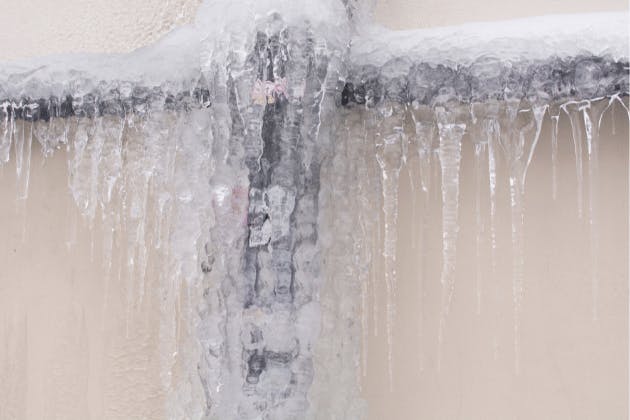When winter temperatures plummet, homeowners often face a frustrating boiler issue: a frozen condensate pipe. This critical component of modern condensing boilers can quickly transform a warm home into an uncomfortably cold space. A condensate pipe plays a crucial role in your heating system, removing acidic water produced during the combustion process. When this pipe freezes, it triggers a safety mechanism that shuts down your boiler, leaving you without heating and hot water.
Understanding how to address a frozen condensate pipe is essential for maintaining your home's comfort during the coldest months. While the problem might sound daunting, most homeowners can resolve it with a few simple steps and some basic precautions. This guide will walk you through identifying, thawing, and preventing condensate pipe freezing, ensuring your boiler continues to run efficiently throughout the winter.

What is a Condensate Pipe?
A condensate pipe is a crucial component of modern condensing boilers. It's responsible for carrying away acidic water produced during the combustion process. This pipe typically runs from the boiler to an external drain, allowing the condensate to safely exit the system.
The condensate pipe plays a vital role in maintaining boiler efficiency. By removing the acidic byproduct, it prevents corrosion and damage to internal components. There are two main types of condensate pipes: internal and external. Internal pipes run through the building before exiting, while external pipes are largely exposed to outdoor temperatures, making them more susceptible to freezing.
Identifying a Frozen Condensate Pipe
Recognising the signs of a frozen condensate pipe is crucial for swift resolution. The most common symptoms include:
- No heating or hot water
- Unusual gurgling sounds from the boiler
- Fault codes displayed on the boiler's control panel
To confirm a frozen condensate pipe, conduct a visual inspection. Focus on bends, joints, and exposed areas of the pipe, as these are the most likely locations for ice blockages. You may notice frost or ice on the exterior of the pipe at the frozen section.
How to Fix a Frozen Condensate Pipe
Step 1: Locate the Blockage
Begin by feeling along the length of the pipe to identify the coldest section. This area is likely where the blockage has occurred. Pay particular attention to bends, joints, and any parts of the pipe exposed to outdoor temperatures, as these are common freezing points.
Step 2: Thaw the Frozen Section
Once you've located the frozen area, it's time to thaw it:
- Heat water in a kettle or microwave until it's hot, but not boiling. Boiling water can damage the pipe.
- Carefully pour the hot water over the frozen section of the pipe. You may need to repeat this process several times.
- Alternatively, use a hot water bottle or microwavable heating pack. Wrap it around the frozen section of the pipe.
- For hard-to-reach areas, a hair dryer can be effective. However, exercise caution to avoid electrical hazards.
Step 3: Restart Your Boiler
After thawing the pipe:
- Consult your boiler's operating manual for the correct restart procedure.
- Power on the boiler and check for any persistent fault codes.
- Ensure the boiler is functioning properly by testing the heating and hot water.
Preventing Frozen Condensate Pipes
Insulation
Proper insulation is key to preventing future freezing:
- Use waterproof lagging or insulation specifically designed for external pipes.
- Ensure the entire length of the exposed pipe is covered, paying extra attention to bends and joints.
- For a DIY approach, use foam tubing insulation available from most hardware stores. Measure your pipe's diameter to ensure a snug fit.
Pipe Placement and Angle
The installation of your condensate pipe can significantly impact its susceptibility to freezing:
- Ensure the pipe is installed according to current regulations and manufacturer guidelines.
- The pipe should have a continuous fall of at least 2.5 degrees towards the drain to promote efficient water flow.
- Minimise the length of pipe exposed to outdoor temperatures where possible.
Internal vs. External Pipes
If persistent freezing is an issue, consider relocating the condensate pipe:
- Moving the pipe to an internal location can dramatically reduce the risk of freezing.
- This modification should only be undertaken by a Gas Safe registered engineer to ensure compliance with safety regulations.
- While potentially more costly, internal routing offers the most reliable long-term solution for preventing frozen condensate pipes.
FAQs
Contact our team
By following these steps and preventive measures, you can effectively address and prevent frozen condensate pipe issues, ensuring your boiler operates efficiently throughout the colder months.
However, if you still need the help of a professional, we'd be happy to help. Get in touch with us today!

